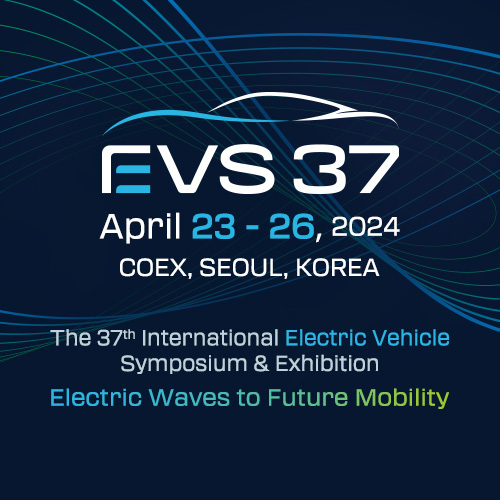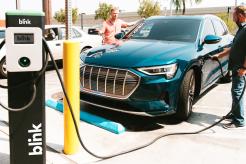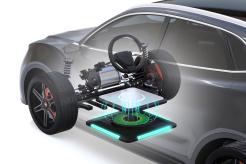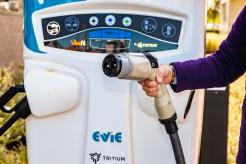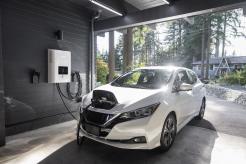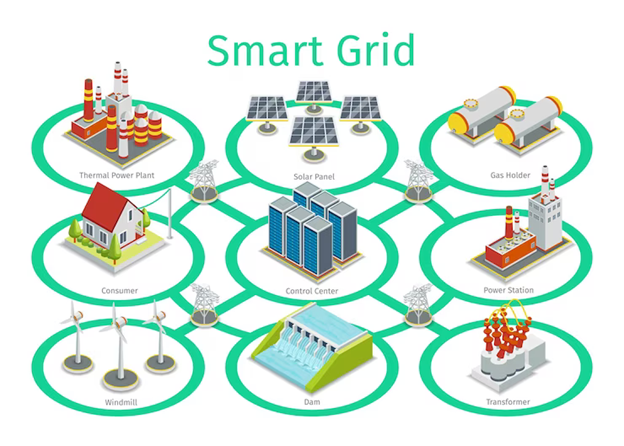
Image via Freepik
Smart grid technology includes all the digital and real-world infrastructure that generates, manages, and monitors electricity from various sources to meet the power needs of the businesses and homes the electricity supplier serves.
This technology can efficiently coordinate supply and demand using leading-edge data management capabilities. More importantly, though, it can reduce operational costs and the environmental impact while maximizing the entire system’s “reliability, resilience, flexibility, and stability.”
How Does Smart Grid Technology Impact the EV Charging Infrastructure Industry?
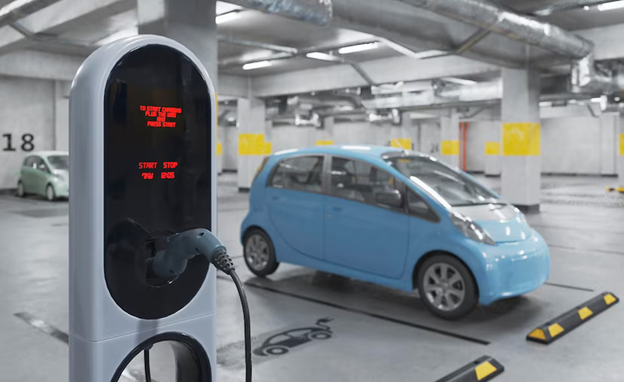
Image via Freepik
Smart grid technology’s efficiency doesn’t stop with the supplier. Consumers can also communicate with the system, as Marcin Frackiewicz shows, giving them the power to limit their usage during low-usage times when prices are lower.
This ability to regulate usage provides a huge advantage to EV owners – and the businesses that provide them with the infrastructure to charge their vehicles. Having a budget-friendly way to charge their cars will go a long way toward lessening the reluctance of some consumers to opt for an EV.
Additionally, with a smart grid in place, EV owners can quickly find charging stations, even in rural areas where charging options are few and far between. Payments are secure, easy to make, and fast – all adding to making EVs a real option, even for rural businesses and homeowners.
Furthermore, as Frackiewicz points out, EV drivers can choose which sources of electrical energy they use to charge their vehicles. According to SmartGrid.gov, wind power usually peaks in the early morning.
Smart grids allow drivers to set the system to charge their vehicles during that time automatically. Since power demand is lower then, it’s also less expensive.
Finally, smart grids also can use EV battery power back into the grid to prevent brownouts and blackouts during peak times in exchange for financial incentives. This technological breakthrough, says SmartGrid.gov, can also integrate various other renewable power sources into the grid, keeping the power on throughout the system.
Challenges in Expanding Smart Grid Technology

Image via Freepik
So, how do we turn this vision into reality? It all depends on our ability to rise to the challenges standing in the way of expanding smart grid technology. These challenges include:
A Still-Recovering Global Economy
As the IEA piece shows, the economic impact of the COVID-19 pandemic put the road to a zero-emission world by 2050 into slow motion. To achieve this goal, global investments in smart grid technology must increase twofold through 2030.
Meeting this funding goal is challenging in countries with still-developing economies and emerging markets. IEA statistics show that 2021 funding from developing countries and emerging markets remained at 2020 levels, leaving a considerable gap to make up.
Scarcity and Price Fluctuation of Resources
Although many countries have introduced wind farms, solar power production, and other zero-emission forms of energy generation into the electricity grid, fossil fuels are still necessary to produce the electrical energy to power the grid. When these countries cut production of these fuels, the scarcity of these resources creates a fluctuation in their prices and availability, as a 2021 Sensors study shows.
On the other hand, materials that go into producing zero-emission or low-emission forms of energy generation, such as batteries and other parts for wind farms and solar energy storage, are often difficult to procure. For that reason, finding new, eco-friendly ways to generate electricity will continue to challenge the world’s energy producers as they pursue their goal of a zero-emission world.
Vulnerability to Cyberattacks
As the Sensors study points out, smart grids require intricate communication networks since they convey, process, analyze, and manage vast amounts of data. Unfortunately, that requirement makes them vulnerable to cyberattacks.
Finding a way to detect and deter such attacks will be necessary as more nations develop smart grids to manage their electricity supply.
Route Instability
To ensure that a smart grid provides a reliable source of electricity to consumers and businesses, electricity suppliers must address packet loss – a major cause of network unreliability. Packet loss occurs when units of data (called packets) fail to reach their destination. It causes service to slow down, disrupting the network and possibly even causing a loss of connectivity.
Route instability is one factor that drives packet loss. So, the scientists developing smart grids must develop an economical yet innovative solution to reduce network packet loss.
Solving Smart Grid Technology’s Challenges
Overcoming the roadblocks to smart grid adoption is essential to building the infrastructure supporting a robust EV charging industry. Fortunately, many solutions to those problems are already in the works.
More Smart Grid Investments to Solve the Funding Challenge
The US Department of Energy has stepped up to the plate to encourage wider adoption of smart grid technology through its Smart Grid Grant program, investing up to $600 million annually from 2022-2026. That’s just the tip of the iceberg.
Other complementary local, state, and federal programs also factor into the equation, making intelligent grid technology an excellent choice for investors.
With a market growth rate of 8.5% per year, smart grid technology has attracted the attention of private investors worldwide. As awareness of the benefits of smart grid tech investment grows, more investors will leap to increase their wealth by investing in this fast-growing industry.
Making more people aware of the financial benefits of investing in smart grid technologies will go a long way toward filling in the funding gap left after the pandemic-induced economic downturn.
Alternatives to Scarce Resources
Improving energy storage technologies can reduce and possibly eliminate the need for fossil fuels to power smart grids. Furthermore, vehicle-to-grid technologies, virtual transmission technology, and other backup power sources can augment renewable sources of electricity to power the grid.
Additionally, scientists are working on alternatives to cobalt and other rare-earth minerals that today’s batteries need to store renewable energy. These materials include iron-nitride supermagnets, as well as magnet-free machines that are under development.
Addressing Vulnerability to Cyberattacks
In the Sensors study cited earlier, the authors singled out not only the vulnerability challenge but also a solution that’s under development. Researchers have suggested – and tested in simulations – a fuzzy logic trust model that identifies malicious nodes in smart grid networks by their “unstable behaviors.” Compared to current security models, this solution produced a 90% improvement in the packet-dropping rate, making it a promising solution.
Proposed Route Instability Solutions
Researchers who have studied the problem of route instability – one of the causes of packet loss – found that certain Institute of Electrical and Electronics Engineers (IEEE) standards that govern wireless network transmission protocols show promise as a solution for packet loss issues, the Sensors study cited earlier shows.
These standards use enhanced distribution channel access (EDCA) to provide high-quality service for time-critical data. EDCA supports differentiated, distributed access to wireless service, enabling the system to deliver massive numbers of data packets to the smart grid’s central servers “at high speed and with a reliable transmission,” the study reports.
What Does the Future of Smart Grid Technology Hold?
Smart grid technology holds great promise for the future, especially in the EV charging infrastructure sector. Its ability to supply power on demand allows EV vehicle owners to charge during off-peak times, making EV ownership a viable option for people on a strict budget.
With leading-edge data transmission, owners can locate EV charging stations nationwide. As adoption grows, so will the infrastructure that supports EV charging – everything from construction to equipment to charging station facilities, such as shops, restaurants, and restrooms.
To take the best advantage of the potential smart grid technology for the electric vehicle charging infrastructure industry, it helps to familiarize yourself with all the latest information. At an EV Charging Summit event, you can soak up the wisdom of the EV industry’s top experts.
Don’t wait to register for our next event. Send in your registration form today!

